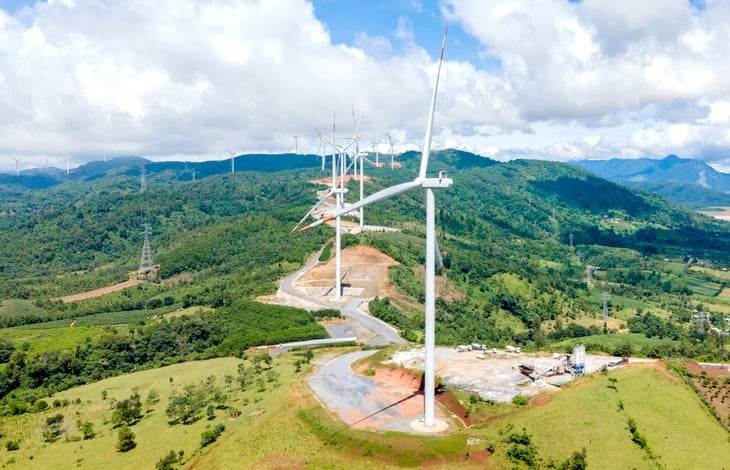
Many renewable energy projects have had their capacity drastically cut due to excess electricity in the system. In the photo: a wind power project in Quang Tri - Photo: HOANG TAO
Surprisingly, over the past month, many power plants, especially renewable energy projects, have had their capacity drastically cut, due to the "power surplus" situation in the power system - a reality that has rarely occurred in Vietnam's power system in recent years, especially when looking at the challenges of power supply both in the short and long term.
Warning from centralized power development
Behind the unusual developments in weather and hydrology that cause excess electricity, forcing the national power system dispatch agency to simultaneously cut the capacity of many power sources, are warnings for planning and allocating power sources to ensure supply and demand and system safety.
Mr. Ha Dang Son - an energy expert - said that the recent situation of excess resources and the need to drastically cut down on renewable energy capacity was a consequence that had been warned before. Especially when renewable energy sources were developed massively but were mainly concentrated in certain areas, especially the Central and South Central regions as in the previous period.
According to Mr. Son, in addition to optimally exploiting the advantages of renewable energy in sunny and windy areas, this power source needs to be developed evenly through financial mechanisms.
However, in reality, the development of renewable energy with preferential price mechanisms (FIT prices) evenly across geographical regions has caused investors to pour capital into areas with natural advantages such as the Central region.
This causes both local overload and transmission shortages while demand is lower than in other areas. Especially when the power system is in an unbalanced state, such as a situation where supply exceeds demand, renewable electricity will be the first to be cut due to higher prices.
"Since 2018, when renewable energy was rapidly developed, there have been warnings about investment allocation using price mechanisms. For example, in less sunny areas like the North, prices will be higher, but in return, consumption demand is greater, near industrial zones. However, applying a uniform FIT price forces investors to choose the most advantageous places, with technical potential, but without looking at the deeper issue of whether they can sell" - Mr. Son analyzed.
And the consequence, according to him, is that capacity cuts occur when there is a lot of water flowing into the lakes, so hydropower is mobilized because it has the cheapest price, which will be made worse when the rate of renewable energy cuts is higher.
This reality is recognized by Mr. Bui Van Thinh - Chairman of Binh Thuan Wind and Solar Power Association - as risks for investors when policies and planning are not really suitable and consistent.
Mr. Thinh said that if in unusual weather conditions, the amount of water flowing into the lakes increases sharply, causing many hydroelectric plants to have to release floodwaters, then cutting down on renewable energy sources is inevitable.
"If it rains a lot and the hydropower plant has to release flood water, or if the grid is overloaded and the system operator is forced to cut capacity, then any investor will understand and accept it. Previously, there was also a situation of cutting power source capacity when there was a lot of wind and solar power coming in but the grid could not meet the demand.
However, what we are worried about are the long-term issues, the story of planning power sources, increasing the rate of off-take sources and especially the problem of electricity prices - which is considered the biggest bottleneck for power development in Vietnam" - Mr. Thinh shared.
In a more specific analysis, Mr. Thinh said that according to the Power Plan 8 being implemented, along with other power sources, renewable energy will continue to be called for investment. However, currently most power sources are slow, while transitional renewable energy projects are ready to mobilize and operate commercially, but also face difficulties in price negotiations.
Meanwhile, many policies are not suitable for reality, such as the mechanism for bidding to select investors but it is not operating smoothly, each locality does it differently. After bidding, but then negotiating prices, many investors are still hesitant, not daring to pay at this time.
In particular, looking at the recent reality when BOT sources are committed to mobilizing without being cut, it creates even greater risks for renewable energy investors. According to Mr. Thinh, it is expected that in the Power Plan 8, the development capacity of gas-fired power sources will account for a large proportion and will enjoy the mechanism of mobilizing, so with the current mechanism for renewable energy, investors must consider their investments more carefully.
Along with that, the electricity price mechanism remains low, while the Vietnam Electricity Group (EVN), the electricity buyer, is suffering huge losses, so it must prioritize low-cost sources to offset high prices from off-take sources such as LNG. This further puts renewable energy investors in a difficult position.

Quang Tri currently has 22 wind power projects in operation with a capacity of 1,024.2 MW - Photo: HOANG TAO
Challenges from price mechanism and market operation
Dr. Nguyen Huy Hoach - an expert from the scientific council of the Vietnam Energy Association (VEA) - said that in the recent unusual hydrological conditions, many hydropower plants had to release floodwaters at the same time, so cutting down on renewable energy sources is inevitable as hydropower is the cheapest source in the system.
In addition, the national power system dispatching must also meet many goals, including safe system operation, ensuring electricity supply at the most reasonable cost, commitment to consumption... so the operation of the power system as in the recent past is considered appropriate by Mr. Hoach.
However, VEA experts also recognized the significant challenges in implementing Power Plan 8 with the current electricity price mechanism and ensuring the operation of a competitive electricity market, especially when the number of electricity sources committed to consuming in the system is increasing.
According to Mr. Hoach, if the consumption mechanism is implemented, committing to mobilize a larger proportion of the electricity system means going against the operating mechanism of the competitive electricity market.
"Accelerating the implementation of a two-component price mechanism applicable to both electricity users and power suppliers will be meaningful in promoting a more effective competitive market and investors will also reduce risks if, in case they are not mobilized and paid for electricity according to electricity output, they will still be paid for the capacity price.
This will help investors feel more secure in investing, reduce risks in mobilizing electricity sources, and also require electricity users to improve technology to use electricity economically and effectively," Mr. Hoach raised the issue.
Agreeing, Mr. Ha Dang Son also said that it is necessary to soon study and apply a two-component electricity price mechanism for both the electricity buyer and the electricity seller, along with amending regulations on the competitive electricity market to suit the reality. This is to ensure cash flow for investors, even in cases where it is not mobilized from the system.
In particular, Mr. Son also warned that simply applying the consumption mechanism without accompanying other policies on electricity prices and the electricity market will pose more challenges to system operations when forced to mobilize high-priced electricity sources at a large rate under all conditions.
And so this not only affects the cost of electricity prices and ensures system operation, but also the requirement to ensure fairness and transparency in the electricity market in mobilizing other power sources can also be affected, even under normal operating conditions of the system.

Song Tranh 2 Hydropower Plant (Da Nang City) during a flood discharge through the spillway - Photo: TAN LUC
This year's power system operation is against the law.
According to the National Electricity System and Market Operator (NSMO), the operation of the electricity system this year (especially in October and November) is contrary to the law when many big storms appear consecutively with extreme weather patterns, while electricity demand decreases, forcing NSMO to cut capacity for many types of power sources.
Of these, 81 - 92/122 reservoirs discharged water with a total capacity of up to 15,940 - 17,040 MW, while the entire system is 19,600 MW. Many reservoirs such as Son La, Hoa Binh, and Lau Chau had to reopen their discharge gates with more than 5,700 MW. The coal-fired power system in the North also had to stop the backup of nearly 3,000 MW. In particular, renewable energy sources also fluctuated strongly, in which wind power had a high capacity of up to 3,400 - 4,000 MW, so the dispatcher was forced to cut it down.
The above reduction is to ensure safe operation of the system when in excess power state during both night off-peak and check off-peak.
Only at night in the North does demand suddenly increase to 10,000 - 15,000 MW, and peak hours alone can increase or decrease to 2,500 - 2,800 MW in just 30 - 40 minutes, so NSMO is forced to mobilize additional gas turbine and LNG power sources to meet peak capacity. Not to mention BOT power sources are forced to mobilize due to the commitment to purchase up to 4,000 MW.
According to a representative of NSMO, the excess power in the system as in the past has caused many difficulties in operation. Because to ensure the safety of the power system, some coal-fired thermal power plants must still run due to the characteristics of not being able to start up every day.
In case the power is stopped for 3-4 days, then restarted for another day, this power source will only be reduced to a minimum level. Hydropower sources that are being regulated still have to mobilize power and cannot be completely stopped to ensure the safety of the project.
Not to mention the BOT source that has committed to purchase must be mobilized. Meanwhile, to ensure the safe operation of the system is a great pressure, especially related to technical factors in the power system.
Failure to do so could lead to a "grid meltdown" - that is, a loss of connection between the power plant and the substation, leading to partial or complete power outages - in a context where the base load is low but increases during evening peak hours.
This forces the national power system operator to cut evenly but still exploit optimally, without discriminating between units based on the price quotation.
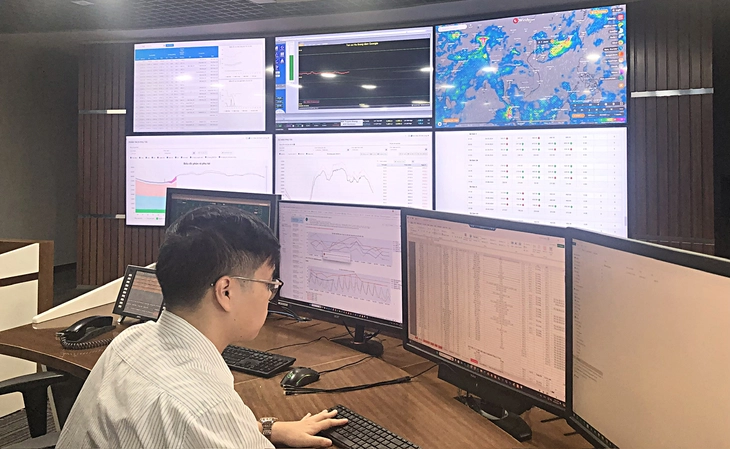
The operation of the national power system has encountered difficulties in the past period when there was a surplus of power - Photo: C.DUNG
Many rainfall records in October
According to statistics from the National Hydrometeorological Service, in October the country recorded 35 rainfall records, including 20 daily rainfall records and 15 monthly rainfall records. The situation of storms and tropical depressions in November is forecast to continue to be complicated.
In the information sent to power generation and grid management units about electricity supply operations, NSMO affirmed that complicated weather developments are the cause that directly affects the operation of the national power system.
Quang Tri wind power enterprise struggling
Six wind power companies in Quang Tri jointly signed a petition to the Ministry of Industry and Trade, stating that the 20-90% capacity cut in September and October 2025 is pushing them into financial risks, even bankruptcy.
The group of businesses named includes Khe Sanh Wind Power Joint Stock Company, Huong Linh 7, Huong Linh 8, Phong Huy, Phong Nguyen and Lien Lap, all located in the southwest region of Quang Tri province.
The petition was sent to the Ministry of Industry and Trade, the Provincial People's Committee, Vietnam Electricity (EVN) and the National Electricity System and Market Operator (NSMO) to consider limiting the reduction of available power generation capacity of wind power plants.
According to the proposal, since the end of September, projects have had their capacity cut by an average of 20-90%, sometimes up to 99%, for many consecutive days - an unprecedented level. In October alone, capacity was cut by about 50%, causing revenue to drop 5% compared to the 2025 plan. If the situation continues in November and December, revenue could fall by 10-20%.
Units said that from October to February next year is the best wind season, accounting for 70-80% of the year's electricity output. Cutting wind at the peak directly affects financial efficiency, while the project's capital recovery period lasts 12-15 years, and the turbine's lifespan is only about 15 years.
Businesses warn that this decline will make it impossible for them to pay principal and interest on bank loans, operating costs and employee benefits, threatening financial collapse or even bankruptcy.
The cluster of companies requested EVN and NSMO to only cut output by a reasonable 2-5% during the peak wind season, and to transparently disclose information on capacity cuts between types of electricity such as wind, solar and hydropower.
In addition, businesses also recommended caution when licensing new projects, avoiding overlapping investments while existing factories are still being cut.
According to the report of the Department of Industry and Trade, the total capacity of electricity generation and commercial operation in the province is currently 1,489.8 MW. In 2024, the total electricity generation output in the province is 3,491 million kWh, and in 2025 it is estimated to reach 3,647 million kWh.
Regarding wind power, the total capacity of wind power projects allocated in Power Plan 8 and adjusted Power Plan 8 is 4,614 MW, of which 22 projects have been put into operation with a capacity of 1,024.2 MW.
Source: https://tuoitre.vn/du-thua-dien-nghich-ly-va-nhung-canh-bao-tu-he-thong-20251116075915246.htm




![[Photo] Prime Minister Pham Minh Chinh meets with representatives of outstanding teachers](https://vphoto.vietnam.vn/thumb/1200x675/vietnam/resource/IMAGE/2025/11/15/1763215934276_dsc-0578-jpg.webp)
![[Photo] General Secretary To Lam receives Vice President of Luxshare-ICT Group (China)](https://vphoto.vietnam.vn/thumb/1200x675/vietnam/resource/IMAGE/2025/11/15/1763211137119_a1-bnd-7809-8939-jpg.webp)


















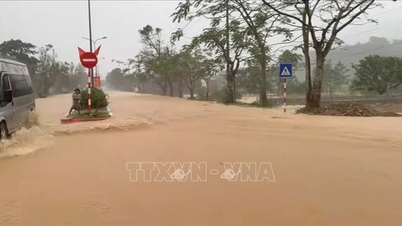

























































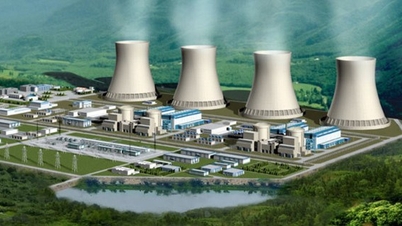





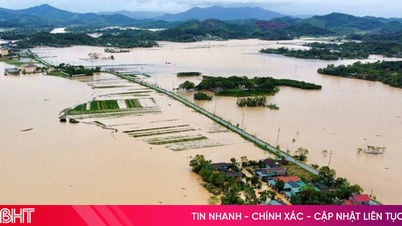


















Comment (0)